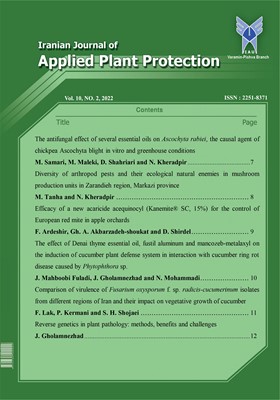Review Article: Reverse genetics in plant pathology: methods, benefits and challenges
Subject Areas : Plant Pests
1 - Associated professor, Department of Horticultural Sciences, Faculty of Agriculture and Natural Resources, Ardakan University, Ardakan, Iran.
Keywords: plant pathogen, Reverse genetics, genomics,
Abstract :
With the advent of molecular biology knowledge, the function of many genes was determined to some extent by studying the phenotype of mutated genes (forward genetics) and a hint of the function of the desired gene was obtained. But with the invention of large-scale DNA sequencing, thousands of genes were identified in various organisms without their function being known. Today, by using the knowledge of reverse genetics, which is currently the most efficient method of evaluating the role and function of genes, the function of many sequenced genes has been determined. Nowadays, the sequence of many genes of living organisms is known, but the phenotype of these sequences often remains unknown. Therefore, reverse genetic strategies have attracted the attention of many genetic researchers, although these strategies do not have the same application in all organisms. Reverse genetics is a technique to discover the function of genes that have been sequenced by DNA sequencing technology. In fact, it is a study method in genetics in which the function of genes is done by studying organisms whose function of genes has been changed. In the past, genetic studies were carried out by studying mutant phenotypes, but now with the progress in biological sciences, researchers are able to attribute phenotypic characteristics to a specific gene.
_||_


